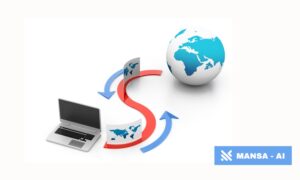Let’s be honest: if you’re online, you’re being tracked — constantly. Whether you’re scrolling through your favorite news app, watching a YouTube video, or shopping for socks, dozens of trackers are silently collecting data about you. Sometimes it’s for personalization. Sometimes for analytics. And sometimes it’s just plain creepy.
But tracking isn’t inherently evil — in fact, some forms of tracking enhance your experience and help digital platforms run more efficiently. The key difference? Transparency, intent, and control.
Take a platform like AADS, for example. It leverages AI-driven ad targeting while focusing on contextual relevance rather than invasive personal tracking. That’s the kind of innovation we need — where data is used smartly, not just invasively.
So, let’s dive in. Here are 5 genuinely creepy ways the internet tracks you… and 3 ways tracking can actually work in your favor.
The Creepy Side of Online Tracking
1. Device Fingerprinting
You’ve probably heard of cookies — those small bits of code that websites store on your browser. But even when you clear your cookies, you’re not necessarily in the clear. Enter: device fingerprinting.
This technique collects detailed information about your device — screen resolution, browser version, operating system, fonts installed, even your battery status — to create a unique profile of you. Unlike cookies, you can’t delete a fingerprint, and it can be used to track you across sites without your consent.
Why it’s creepy: You have no control over it, and you often don’t know it’s happening.
2. Mouse Movements and Keystroke Behavior
Websites can track how fast you type, how long you hesitate before clicking, where your cursor moves on a page, and what parts of a form you abandon.
Some of this is for usability research — but often, it’s used to build behavioral profiles. Combine this with AI and machine learning, and you’ve got a system that can detect your emotional state, attention span, and even if you’re multitasking.
Why it’s creepy: It feels like a silent observer is peering over your shoulder every time you move your mouse.
3. Location Tracking (Even When You Say No)
Disabling GPS on your phone doesn’t always stop location tracking. Apps and websites can use Wi-Fi triangulation, Bluetooth beacons, and even your IP address to get a solid approximation of where you are. Some can track your location even when they’re not open — depending on permissions.
Even creepier? Some apps sell this location data to third parties, creating real-time movement maps of millions of people.
Why it’s creepy: Your physical movements are monetized without your full understanding or consent.
4. Shadow Profiles
Even if you’ve never signed up for a service like Facebook, chances are — they still have a profile on you. It’s called a shadow profile, built from data your friends and family upload (think contact syncing) and information scraped from other sources.
These shadow profiles are invisible to you, but very real in the backend databases of many tech giants.
Why it’s creepy: You don’t even have to participate in the digital world to be tracked by it.
5. Cross-Device Tracking
Ever searched for a product on your laptop and then seen an ad for it on your phone? That’s cross-device tracking — and it’s not always because you’re logged into the same Google account.
Advertisers use probabilistic models and data-sharing agreements to match your behavior across multiple devices, even if you never signed in. Some companies even track TV viewing habits to match ads on your phone later.
Why it’s creepy: Your devices are conspiring to serve you ads, even without direct links.
The Useful Side of Tracking
Now, let’s be fair — not all tracking is bad. When done ethically and transparently, data collection can improve your digital experience, save you time, and even make the internet safer.
1. Contextual Ad Targeting
Instead of following you around with cookie-based retargeting, contextual advertising focuses on what you’re looking at right now, not who you are. For instance, if you’re reading an article about electric bikes, you might see an ad for a cycling helmet — even if you’ve never searched for it.
Platforms like AADS are pioneering this approach. By using AI and natural language processing to understand page content, they serve relevant ads without invading your privacy.
Why it’s useful: You get ads that make sense — without compromising your personal data.
2. Security and Fraud Prevention
Tracking behaviors like login times, typing rhythm, or sudden IP changes can help flag suspicious activity. For instance, if you usually log in from Canada but suddenly access your account from Russia with a new browser and odd password attempts, systems can automatically flag it for review.
Behavioral tracking is a cornerstone of fraud detection — not just in banking, but also in social platforms, email services, and e-commerce.
Why it’s useful: It helps keep your accounts secure and reduces cybercrime.
3. User Experience Personalization
Let’s say you visit a weather website. Would you prefer to type in your city every single time, or have it remember your last location? Or on an e-commerce site — seeing products tailored to your style vs. random generic listings?
As long as it’s opt-in, personalization makes interfaces smoother, faster, and more aligned with your preferences. The key here is consent and control — you should be able to turn it off if you want.
Why it’s useful: When done right, it makes digital interactions feel intelligent, not intrusive.
So… Should You Be Worried?
Yes — but not paranoid.
The digital world isn’t inherently evil. But it’s definitely not neutral. The line between helpful and harmful tracking is thin, and often invisible to the end user.
The big takeaways?
- Learn how you’re being tracked.
- Use tools to block the creepy stuff.
- Support platforms that use data ethically.
Technologies like contextual targeting, federated learning, and privacy-first analytics offer a better path forward. The industry doesn’t need to eliminate tracking altogether — it needs to grow up and earn back user trust.
If you’re a business owner or advertiser, the message is clear: Privacy is now a competitive advantage. Consumers are smart, regulators are watching, and invasive tracking is becoming a legal and reputational liability.
And if you’re a user? Keep your software updated, use privacy tools, question those cookie banners, and know that you do have more control than you think.
Final Thought
The internet doesn’t forget — but it can learn. Let’s build systems that respect users as much as they track them. Platforms like AADS are already showing it’s possible to do smart advertising without creeping people out.
Because at the end of the day, the most valuable clicks come from trust, not tricks.




























